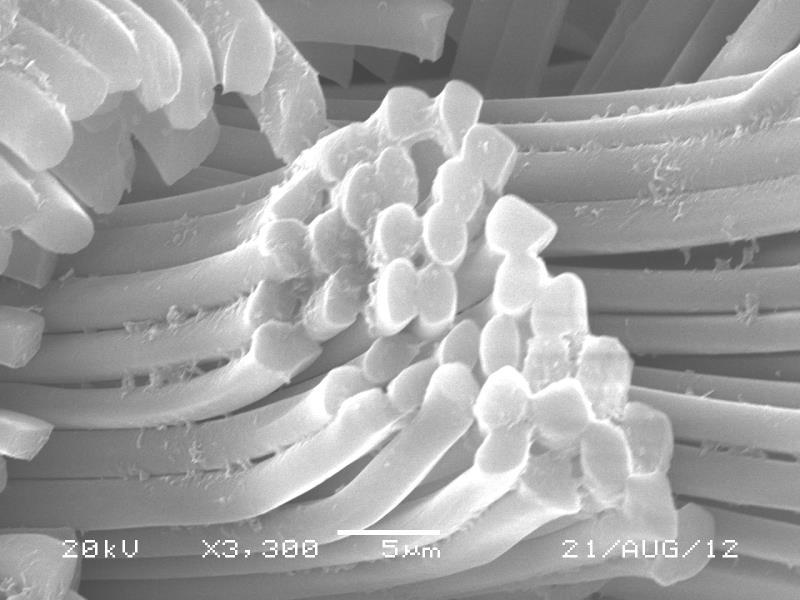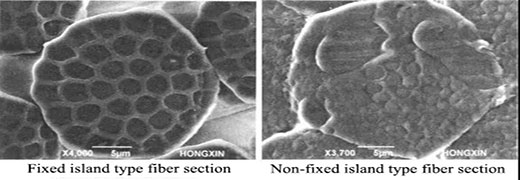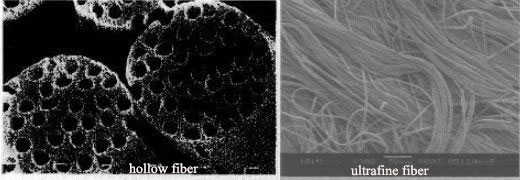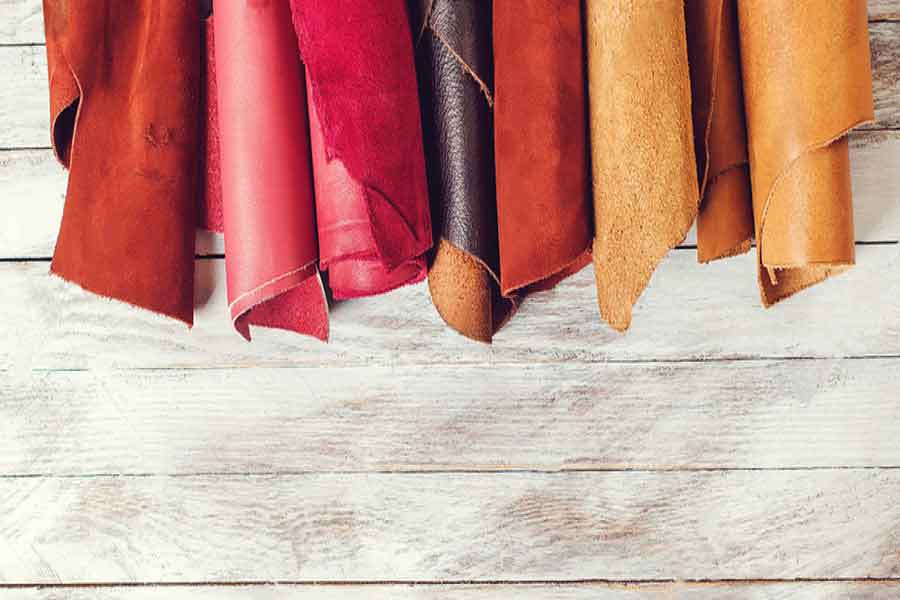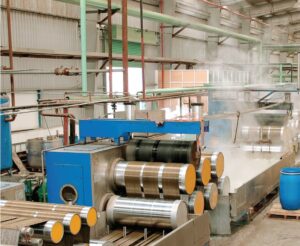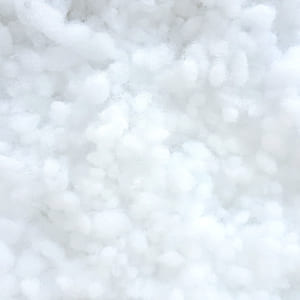Definition of sea-island fiber
Sea-Island fiber, also known as synthetic silk, is a specialized textile fiber created through a process of blending natural silk with synthetic fibers. Here is a comprehensive overview of Sea-Island fiber:
Sea-island fiber, also known as super-conjugate fiber or butterfly polyester yarn, is created through the dispersion of a core component within another polymer in a continuous longitudinal manner. The core component, known as the island phase or dispersed phase, is formed by polymer material. The surrounding polymer, referred to as the sea component, sea phase, or continuous phase, surrounds the core. This unique structure results in the dispersed phase fiber appearing as islands within the fiber section, hence the name sea-island fiber.
Sea-island fiber refers to a type of composite fiber structure used in the textile industry. It is composed of a core-sheath arrangement where the core is made of one material, typically a cheaper or more abundant fiber, while the sheath is made of a different material, often a more desirable one in terms of performance characteristics.
The name “sea-island” originates from the fact that historically, this type of fiber structure was developed to mimic the natural fibers found in sea island cotton, which has long, fine fibers known for their softness and luster. However, sea-island fibers are not limited to cotton; they can be composed of various materials such as polyester, nylon, or even other natural fibers like wool or silk.
The core material provides bulk and strength to the fiber, while the sheath material contributes desirable properties such as softness, moisture-wicking abilities, or dye affinity. This arrangement allows manufacturers to achieve a balance of performance and cost-effectiveness in their textile products.
Sea-island fibers are commonly used in the production of high-quality textiles like sportswear, lingerie, and other apparel where softness, moisture management, and comfort are important considerations.
Sea-Island fiber is a blend of natural silk obtained from silkworms, spiders, or other insect larvae, and synthetic fibers, typically polyester. These fibers are combined through a specialized spinning process to produce Sea-Island fiber.
Care for Sea-Island fiber as you would for synthetic fibers, following the specific instructions on the textile label. To preserve the unique structure and texture of Sea-Island fiber, use gentle detergents, refrain from vigorous rubbing, and avoid high-temperature drying.
Development Timeline of Sea-Island Fiber
Sea-island fiber, originally developed in the early 1970s, was primarily utilized for the creation of suede-like textiles.
In 1970, the Toray Company of Japan introduced “ECSAINA”, an artificial deerskin fabric composed of soluble superfine fibers known as sea-island fibers, marking the inception of industrial manufacturing of sea-island composite superfine fibers.
Following suit in 1972, Japan’s Kanebo Corporation successfully engineered a dissolvable polyester-nylon synthetic fiber under the brand name “BELIMA”.
In recent years, countries such as Japan, South Korea, Chinese Taiwan, the United States, and Italy have engaged in the advancement and production of sea-island fibers. Japan, the United States, and Europe have achieved industrialization of sea-island fibers with established technology. South Korea and Chinese Taiwan have also introduced notable products in this field.
While research on sea-island synthetic superfine fiber began in our country in the early 1970s, significant progress was not achieved until the 1990s. It was subsequently included in the national science and technology development plan during the “seventh five-year plan”.
Sea-island Fiber Production Technology
Sea-island fiber production involves two main methods: composite spinning and blended spinning. The island component typically consists of materials such as PET and PA, while the sea component includes COPET, PVA, PE, and PS.
Composite island fiber is categorized into fixed island type and non-fixed island type, based on the solubility of components in the fiber.
Fixed island type fiber produces hollow fiber once the island part dissolves, whereas non-fixed type fiber yields sea-island ultrafine fiber after the sea part dissolves.
For instance, the alkali-soluble modified COPET/PA6 sea-island composite ultra-fine short fiber is created through conjugate composite spinning technology, using COPET as the sea component and PA6 as the island component.
Properties of Sea-island Fiber
Sea-Island fiber features hollow channels, or “islands,” within the fibers, giving it a lightweight, warm, and breathable quality. It has a soft, lustrous, silk-like texture, along with the durable and strong characteristics of synthetic fibers.
1. The sea-island fiber offers a high level of comfort due to its small size, resulting in a soft and smooth fabric with a dense texture. This fabric is known for its moisture absorption, water repellency, and unique aesthetic qualities. Its multi-layer structure creates a fabric with a subtle sheen and clean appearance.
2. The fibers in the fabric contain numerous voids that enhance its ability to absorb moisture and oil through capillary action. By adjusting the spacing between fibers, a sea-island high-density fabric can be woven with exceptional waterproof and breathable properties. The micro-porous structure of the fabric allows for improved heat insulation.
3. The flexibility of the fiber allows for a graceful and sophisticated drape in the fabric, enhancing its overall appearance. The inclusion of high-shrinkage silk in the core layer contributes to the fabric’s excellent drape and visual appeal.
4. The fiber’s large specific surface area and voids make the fabric highly effective at absorbing dust, cleaning, and filtration. Its soft and slender nature also ensures that delicate items are protected during the cleaning process, making it a high-performance cleaning product.
Application of Sea-island Fiber
Sea-Island fiber is commonly used in high-end clothing and home textiles, such as dresses, shirts, beddings, and curtains, due to its luxurious texture and appearance. It can also be blended with other fibers to enhance textile performance, such as adding elasticity, wrinkle resistance, or moisture-wicking properties.
Fashion Fabric
Innovative textile materials such as superfine fiber with a higher number of monofilaments than ordinary filaments offer increased surface area and enhanced air permeability in fabrics. Utilizing non-woven weaving techniques, these fabrics can be transformed into high-quality materials suitable for upscale fashion applications. The superior breathability and softness of chemical fiber fabrics make them a popular choice in the high-end fashion industry.
Artificial Leather
Polyurethane (PU) leather, constructed with fine fibers as the base fabric, replicates the microstructure of natural leather while offering improved moisture permeability, dimensional stability, and greater durability compared to natural alternatives. PU leather also addresses concerns associated with natural leather, such as unevenness and limited utilization rates. Its resistance to dampness, mold, and odors make PU leather a desirable option for consumers seeking sustainable and high-performance materials.
High-performance wipes
Ultra-fine fiber materials exhibit exceptional characteristics such as small size, large specific surface area, softness, and high water and dirt absorption capacity. These properties make them ideal for high-performance wipes that effectively remove thin oil films without damaging surfaces or leaving behind residues. Applications for these advanced wipes include lens cleaning and other specialized cleaning tasks where precision and cleanliness are paramount.

